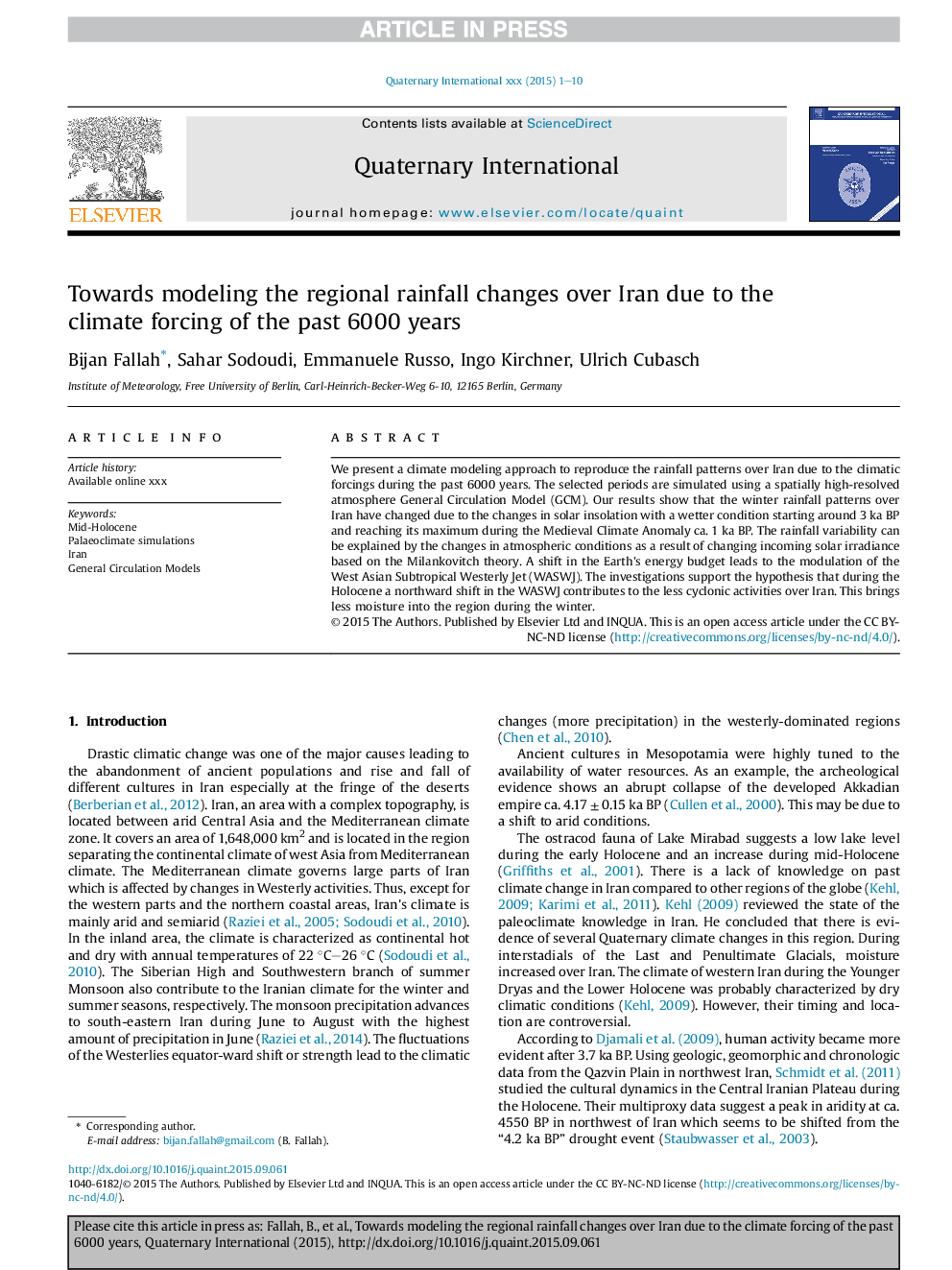| Article ID | Journal | Published Year | Pages | File Type |
|---|---|---|---|---|
| 5113737 | Quaternary International | 2017 | 10 Pages |
Abstract
We present a climate modeling approach to reproduce the rainfall patterns over Iran due to the climatic forcings during the past 6000 years. The selected periods are simulated using a spatially high-resolved atmosphere General Circulation Model (GCM). Our results show that the winter rainfall patterns over Iran have changed due to the changes in solar insolation with a wetter condition starting around 3Â ka BP and reaching its maximum during the Medieval Climate Anomaly ca. 1Â ka BP. The rainfall variability can be explained by the changes in atmospheric conditions as a result of changing incoming solar irradiance based on the Milankovitch theory. A shift in the Earth's energy budget leads to the modulation of the West Asian Subtropical Westerly Jet (WASWJ). The investigations support the hypothesis that during the Holocene a northward shift in the WASWJ contributes to the less cyclonic activities over Iran. This brings less moisture into the region during the winter.
Related Topics
Physical Sciences and Engineering
Earth and Planetary Sciences
Geology
Authors
Bijan Fallah, Sahar Sodoudi, Emmanuele Russo, Ingo Kirchner, Ulrich Cubasch,
